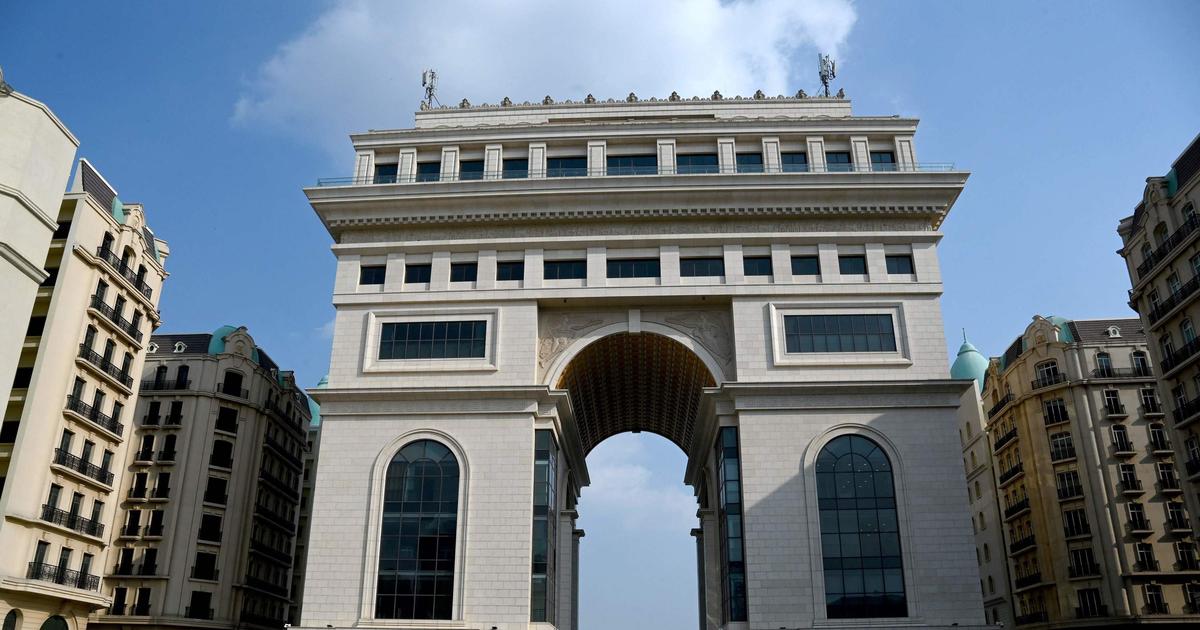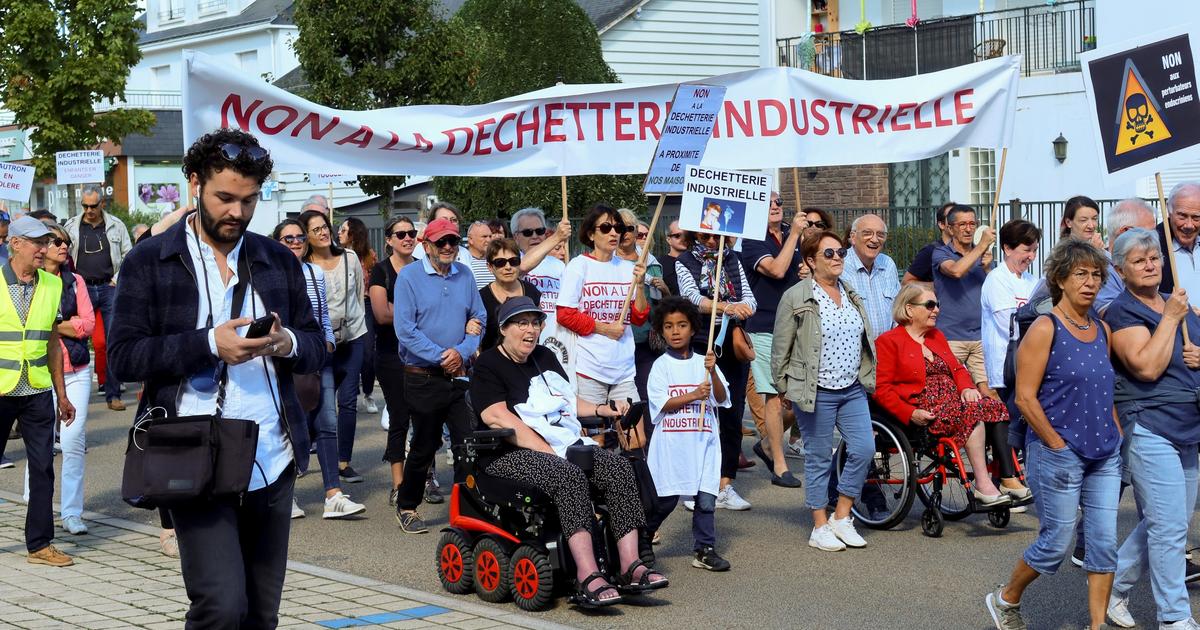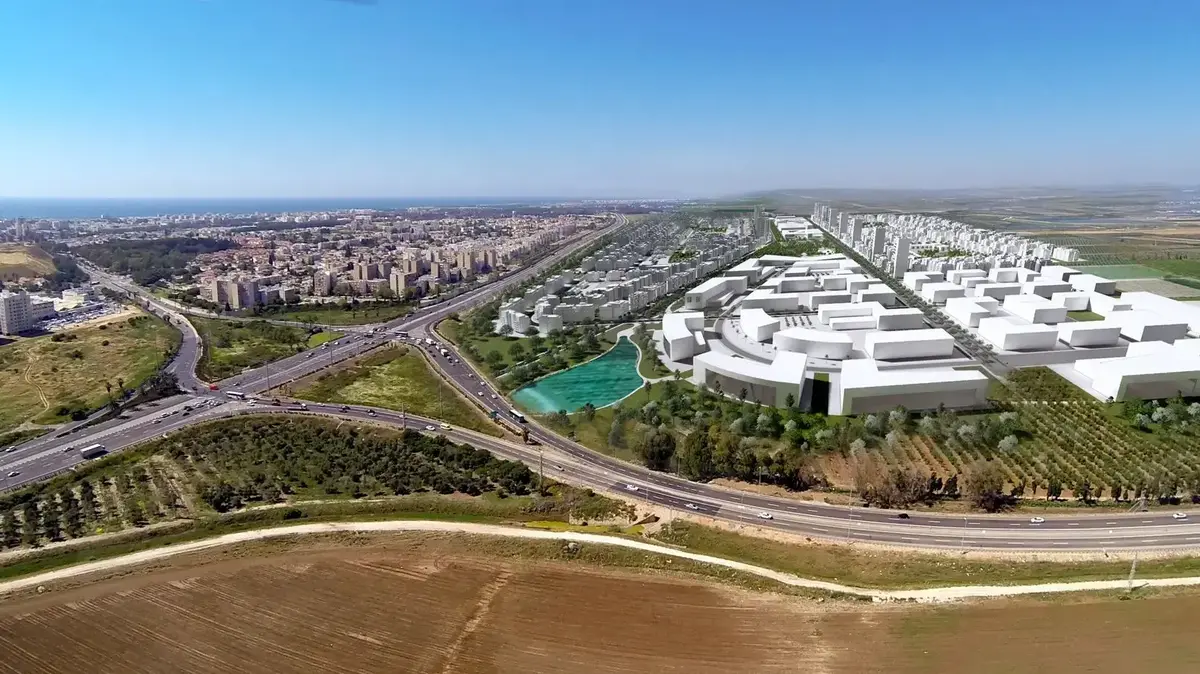Ven Voeun has lived here all his life: on the outskirts of Cambodia's capital Phnom Penh.
There, where the lakes are, in which his parents, then he, now his children used to harvest vegetables.
Water spinach (Morning Glory) and water mimosa are served with numerous dishes in Cambodia, the green leaves grow wild in the wetlands in front of the megacity.
Every morning, starting at four o'clock, as soon as it gets a little light, smallholders go out onto the lakes in their narrow wooden boats, cut the green leaves out of the muddy ground, stack them and knot them into bundles.
They say you can only harvest early in the morning, maybe by seven or eight o'clock.
After that it gets so hot that it is impossible to work in the open sun.
Ven Voeun takes over on land: the 65-year-old takes the bundles of vegetables to the city center, where he sells them every day at the fresh market.
Even on this early morning at the end of March, he wants to go straight to the market.
Lakes are filled with sand from the Mekong and drained
The wetland stretches over 1,500 hectares in front of Phnom Penh, Cambodia's capital with a population of two million.
Like Ven Voeun, more than 1000 families make a living from what grows in the water: fish and vegetables.
The waters are also important for the city in other respects: Shallow in the dry season, the lakes serve as natural retention basins for the floods in the rainy season, protecting Phnom Penh from flooding.
The city lies on the banks of three rivers, Mekong, Tonle Sap and Bassac.
This makes the city prone to flooding during the rainy season from June to October.
In addition, the lakes work like a natural purification plant for the sewage of the big city, where there are hardly any functioning sewage treatment systems.
At least that's how it was until now.
Peasant Voeun points with his hand beyond one of the lakes.
“The lakes reached that far back when I was little.
There are blocks of flats there now.
Only a few puddles remain of the water bodies.
They will soon have filled up the last of the water.”
Lakes should disappear, building land should be created
Cambodia's largest land reclamation project is taking shape where Ven Voeun has lived his whole life, where he is just cramming the bundles of fresh spinach into his luggage rack.
Since 2004, the lakes have been gradually filled up and drained with sand from the Mekong and Bassac rivers.
16 bodies of water have already disappeared, 10 more will soon be gone.
With the goal: building land should be created.
The project is called ING City Project.
According to human rights activists, 90 percent of the area is earmarked for a huge real estate project.
Villas, apartment complexes, several shopping malls, supermarkets, shopping streets.
Phnom Penh is experiencing a gigantic construction boom fueled by the government.
She believes that promising development has something to do with high-rise buildings with mirrored glass and ten-story shopping centers.
The boom is at the expense of the environment and the people who previously lived in the wetlands.
Overexploitation of sand as a resource in Cambodia has only just begun
The draining is progressing.
Not even the corona crisis, in which Cambodia's economy suffered badly, slowed down the project: excavators and trucks rolled out every day.
The effort is gigantic.
The sand for the project is missing in the river bed of the Mekong: As a result, riverbanks break off in many places and land is lost.
Barges bring the sand down the Mekong to ports around Phnom Penh.
There the sand is loaded onto land, where it is mixed with water.
The mixture is then pumped through pipes into the construction area – or brought there by trucks that pop up all over Phnom Penh's cityscape.
The sand that slides off the truck bed on the way to the suburbs piles up on the sidewalks and pollutes the air.
Several human rights organizations, including UN Human Rights, published a report on this.
The finding is clear: the sand project has far-reaching consequences for the environment and exposes more than a million people to an increased risk of flooding.
Photographer Thomas Christofoletti lives in Phnom Penh.
He documents the shrinking of the wetland not far from his town with his camera right from the start.
He says: »The size of the project is almost overwhelming.
Huge areas have been filled in with alarming speed.«
When all lakes are drained soon, the need for sand will not decrease.
Because sand is also a basic ingredient for what the future buildings on the newly gained land are to consist of: concrete.
The environmental platform The South Pole quotes figures from the Cambodian Ministry of Mines and Energy.
According to this, the overexploitation of the sand resource in Cambodia may have only just begun: In 2019, 6 million cubic meters were extracted from the Mekong and Bassac rivers.
11.7 million in 2020. In 2021 more than 10 million cubic meters.
Ven Voeun, the small farmer who will soon have no more harvest, wants to look for another job.
He's already in his mid-sixties, that's true, but maybe there's a job for him in construction?
He has no choice.
The land on which he earns his living does not belong to him.
He pays rent, says Ven Voeun.
To "some large landowner."
He's never seen it, he doesn't even know his name.
This contribution is part of the Global Society project
Expand areaWhat is the Global Society project?
Under the title "Global Society", reporters from
Asia, Africa, Latin America and Europe
report on injustices in a globalized world, socio-political challenges and sustainable development.
The reports, analyses, photo series, videos and podcasts appear in a separate section in the foreign section of SPIEGEL.
The project is long-term and is supported by the Bill & Melinda Gates Foundation (BMGF).
A detailed FAQ with questions and answers about the project can be found here.
AreaWhat does the funding look like in concrete terms?open
The Bill & Melinda Gates Foundation (BMGF) has been supporting the project since 2019 for an initial period of three years with a total of around 2.3 million euros - around 760,000 euros per year.
In 2021, the project was extended by almost three and a half years until spring 2025 under the same conditions.
AreaIs the journalistic content independent of the foundation?open
Yes.
The editorial content is created without the influence of the Gates Foundation.
AreaDo other media also have similar projects?open
Yes.
With the support of the Gates Foundation, major European media outlets such as The Guardian and El País have set up similar sections on their news sites with Global Development and Planeta Futuro respectively.
Did SPIEGEL already have similar projects? open
In recent years, DER SPIEGEL has already implemented two projects with the European Journalism Center (EJC) and the support of the Bill & Melinda Gates Foundation: the "OverMorgen Expedition" on global sustainability goals and the journalistic refugee project "The New Arrivals" as part of this several award-winning multimedia reports on the topics of migration and flight have been created.
Expand areaWhere can I find all publications on the Global Society?
The pieces can be found at SPIEGEL on the Global Society topic page.









